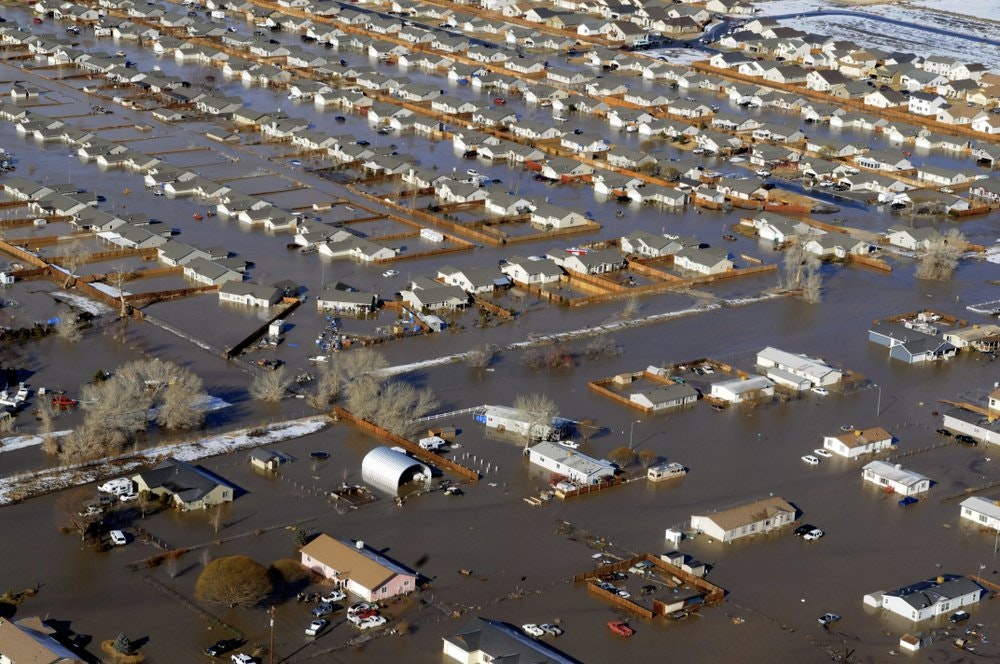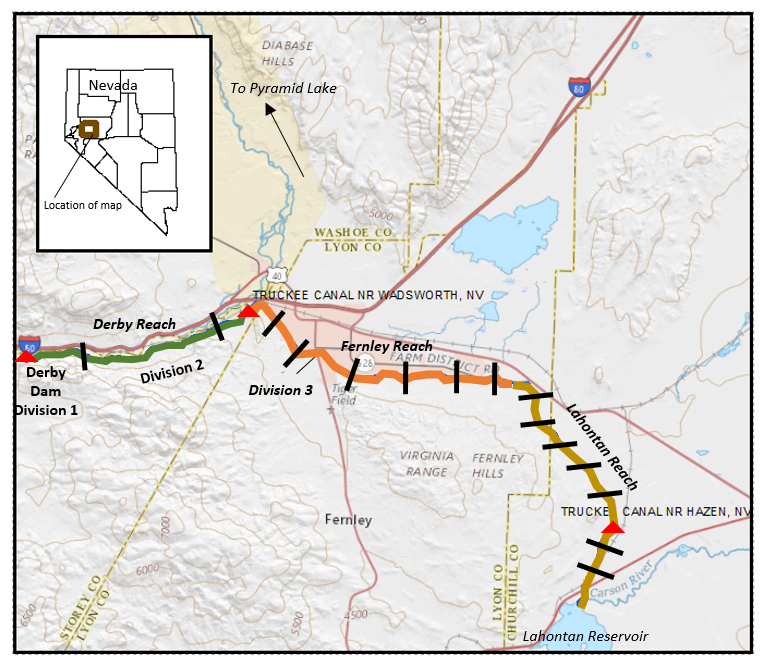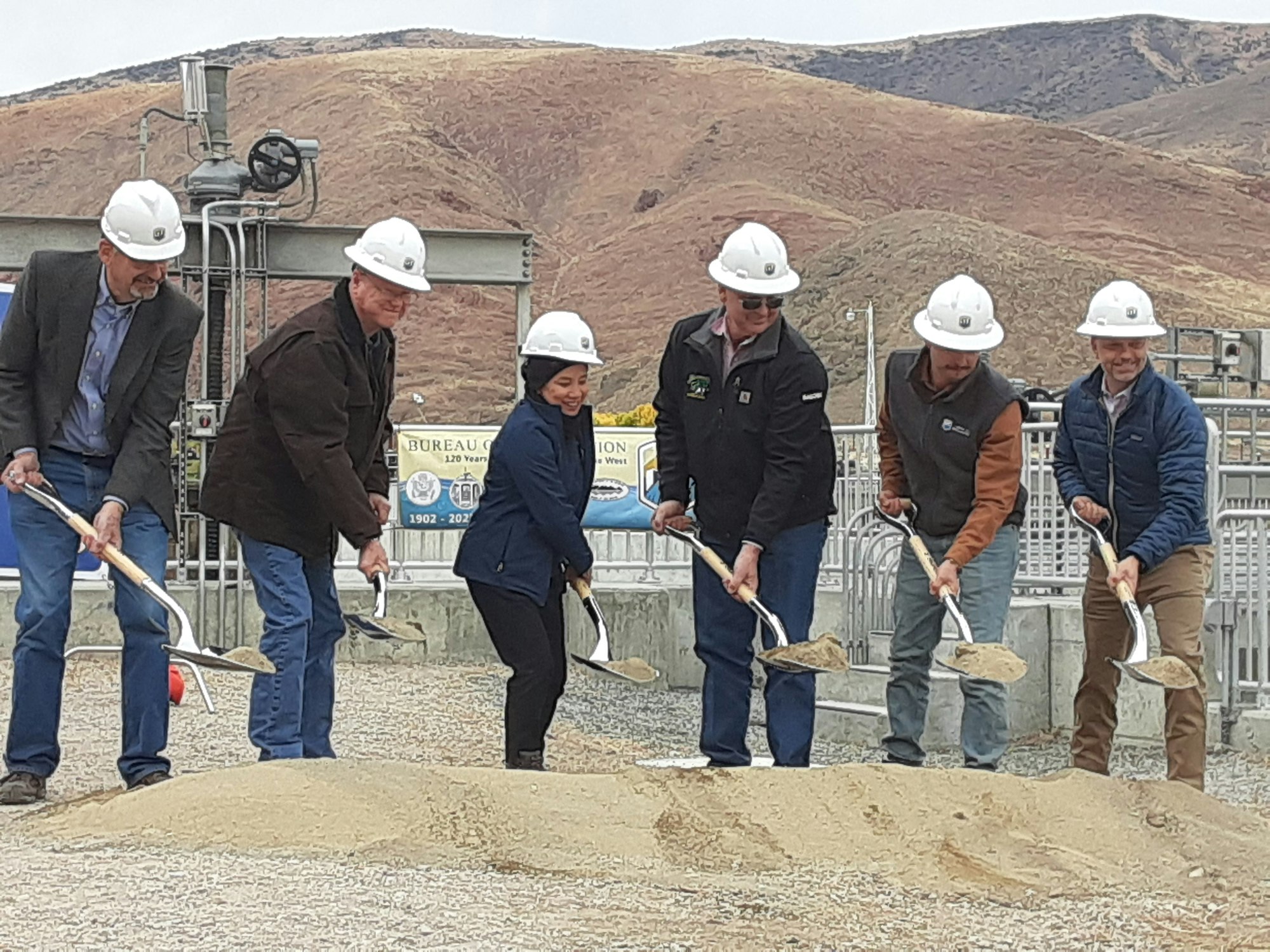Truckee Canal Public Safety Project
The Truckee Canal, one of the single most important and aged features of the Newlands Project, was constructed between 1903 and 1905.

The Canal conveys water for beneficial uses to approximately 3,000 water right holders including individual landowners, farmers, the City of Fernley, Churchill County, the City of Fallon, the Fallon Paiute-Shoshone Tribe, the United States Navy, the State of Nevada (Division of Wildlife), the United States Fish and Wildlife Service (Stillwater National Refuge), and others. The District has operated and maintained the Canal, as a part of the Newlands Project, since January of 1927.

On January 5, 2008, the north embankment of the Canal within the City of Fernley, Nevada, breached after a winter storm. The resulting release of water caused flooding and damage to approximately 590 properties. Repairs were made to the Canal during the month of February, 2008; and, the Canal was reopened for service in March of 2008. Since the breach, the Bureau of Reclamation (Reclamation) has undertaken numerous inspections and studies identifying the repair and maintenance needed to restore safe, long-term operation of the Canal. Since 2008, flows in the Canal have been reduced. Currently, the Canal is operated subject to stage elevation (water level) restrictions. The Canal is the sole source of water with which to satisfy surface water rights in the Truckee Division (the Fernley area) of the Newlands Federal Reclamation Project. The Canal also provides a supplemental source of water to surface water right holders in the Carson Division (the Fallon area) of the Newlands Project.

The required process for evaluating impacts relating to Canal repair was initiated through the National Environmental Policy Act (NEPA). The Truckee Canal is a federally owned facility. NEPA requires that full disclosure of any major actions by federal agencies be made -including a comprehensive environmental review. In October of 2015, Reclamation published its notice of intent to prepare, under NEPA, an Environmental Impact Statement (EIS) –to identify the form of any action needed to repair the Canal and thus develop the action necessary to reduce operational risk. Also in 2015, Reclamation requested that federal, state, and local agencies, Native American Tribes, and the District participate in the analysis of the extraordinary maintenance needed to repair the Canal to safe, long-term operation. Cooperating agencies included the District, the Bureau of Indian Affairs, Churchill County, the City of Fallon, the City of Fernley, the Fallon Paiute-Shoshone Tribe, the Pyramid Lake Paiute Tribe, and the United States Fish and Wildlife Service. Reclamation held eight joint cooperating agency meetings between 2016 and 2017 in Fernley, Nevada. Reclamation also met with each cooperating agency separately in the fall of 2016 and 2017 and the summer of 2018. A final EIS was issued by Reclamation.

A Record of Decision (ROD) followed in December of 2020 determining that lining the Canal with a full prism geo-membrane/concrete application, and replacing other related structures, would provide the highest level of risk reduction of all the alternatives considered. A no action alternative was also considered. This alternative consists of not implementing any of the risk mitigation measures identified by the risk analysis; rather, the Canal would be operated as it has been –so as to minimize short-term risks by maintaining Canal stage at a much lower, safe level. Current Canal operation and maintenance practices do not address all the risk factors. Current operational practices will result in further long-term deterioration of the Canal. Without affecting any repair, so as to minimize the risk of any possible future breach of the Canal and protect the public, the rate of Canal flow would be reduced drastically –to a rate as low as 140 cubic feet per second (cfs) or one quarter of its present flow capability. As a result of transportation losses, the amount of water actually reaching Lahontan Reservoir for storage would be 110 cfs, more or less. Depending upon the hydrologic conditions of both the Carson and Truckee River watersheds that supply water to the Newlands Project, the Truckee River provides as much as 70% of the total water supply.

If repair was not made to the Canal, and a lower flow regime was instituted as a long-term measure for public safety, the result would be less water available to all water right holders.

The safe, long-term alternative for the Canal, as determined by the EIS and the ROD, required lining 12.7 miles of Canal, replacing four check structures, modifying the Bango check structure, replacing the Hazen Gage with a flume, and armoring a location on the Canal known as Pour Point 8 -where storm waters flow into the Canal during heavy storm events. However, Reclamation reduced the scope of the repair to 3.56 miles of full prism lining, replacement of the Fernley Check Structure, modification of the Bango Check Structure, and the armoring of Pour Point 8. The reduced scope of repair drastically reduced the repair cost while still allowing flows greater than 500 cfs in the Canal.

In June 2022, the District held an election to determine the approval of a repayment contract for up to $35,000,000 and a canal outage for the 2023 season to effect repairs. The contract and outage were approved with an overwhelming majority. Work began in November 2022 at the conclusion of the water season. Winter 2022 posed significant challenges to the construction crew as heavy rains and record snowfall poured over the construction sites. A heavy storm in Spring 2023 caused significant flows to pour through the Canal and they were required to breach the coffer dam to prevent overtopping. This washed away significant amounts of dirtwork causing delays. However construction continued through October 2023. At that point the work below the water level was completed. The Board approved a one month season for the Truckee Division in an effort to save farm fields and raise the groundwater table for domestic wells. Work above the water level continued through winter 2023 and was declared substantially complete in July 2024.

